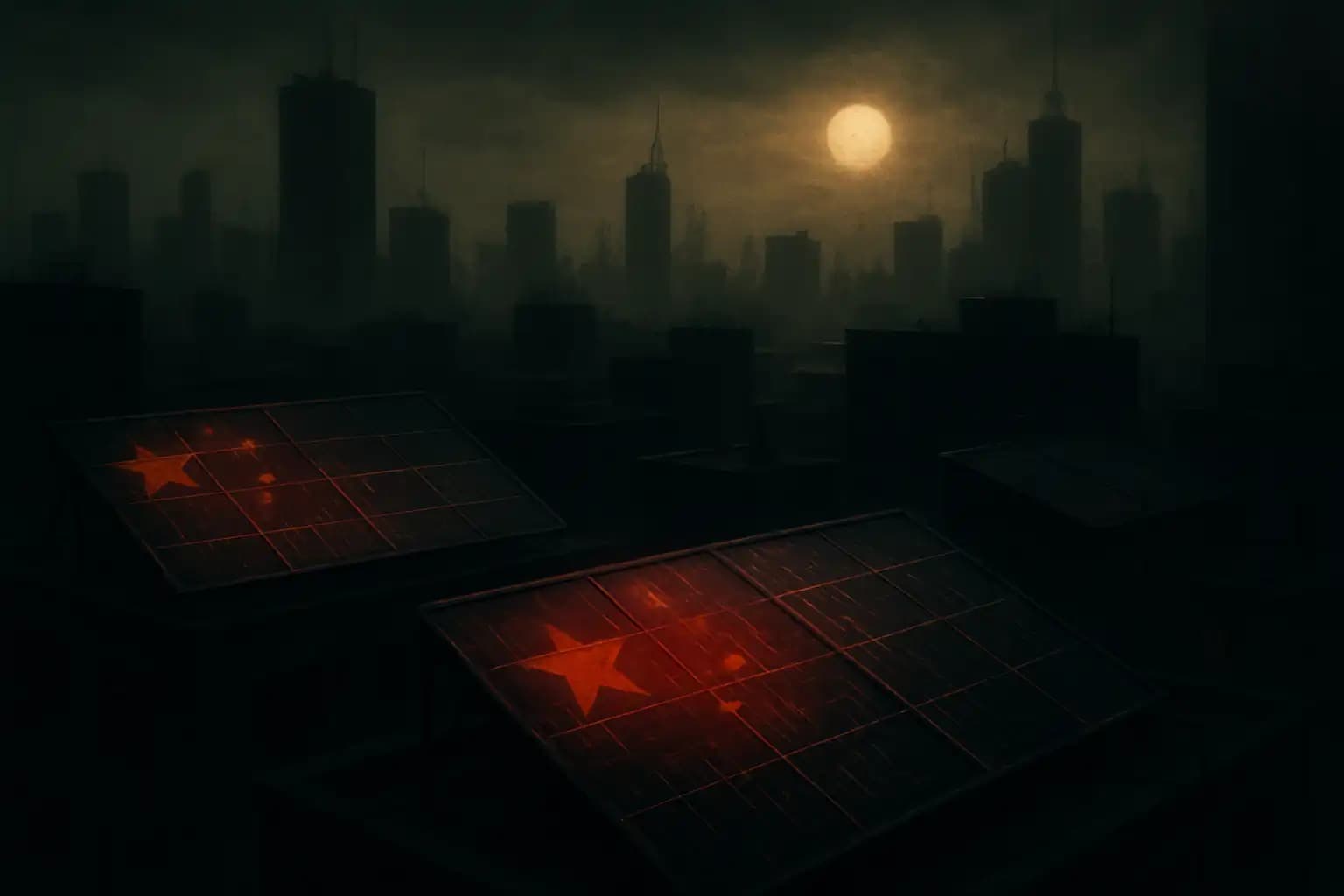Solar panels—symbols of the green revolution—should not feel sinister. Yet, as China dominates the global solar supply chain, anxiety rises in the West: Are we unwittingly installing energy sleeper cells on rooftops and in fields? Writers and analysts now question whether millions of made-in-China photovoltaic panels could become tools in a digital showdown, risking a potential global blackout reminiscent of a tech-thriller plot or your favorite bunker-based radio show.
This discussion extends beyond economics and technology. Alongside scrutiny of the solar sector, concerns grow over rapid innovation in Chinese AI and chips, advances in drone warfare, and geopolitics resembling hidden international shadow games. The scope extends beyond a single industry—the transition to renewable energy is now at the crossroads of sustainability, supply chain risk, and digital sabotage.
China’s Solar Supply Chain Dominance and Geopolitical Risks
No nation has captured the solar panel market like China. According to Visual Capitalist, China manufactures about 84% of the world’s solar panels, covering everything from polysilicon processing to final module assembly. The International Energy Agency notes this dominance isn’t merely about cheap labor or efficiency; it’s a vertically integrated, heavily subsidized juggernaut cementing China’s position as essential to global energy transitions.
This concentration raises alarms about supply chain security. Consider a sudden export restriction, like this supply shock scenario, affecting a world committed to renewables. Analysts caution that this monopoly could become a weapon, exposing economies to rising prices and sabotage risks. The vulnerabilities that plague critical infrastructure, from AI-driven energy wars to solar flare chaos, now threaten green tech as well.
Are Solar Panels a Cybersecurity Trojan Horse?
Do solar panels made in China pose a cybersecurity threat? This concern has gained credibility in a world where smart tech researchers confront malicious AI exploits and hardware-level hacks are possible. Although no documented evidence exists of sabotage-ready backdoors in mass-market solar panels, experts stay alert. Modern solar systems connect to grids through smart inverters and cloud software—these can be vulnerable if crafted with malicious intent or weak security. The greater the dependence on a single manufacturing source, particularly one known for cyber-espionage, the greater the national security risk.
History teems with the specters of actual and suspected hardware exploits—consider compromised routers, chips, and pipelines. Some dismiss these warnings as technoparanoia, but the stakes remain significant. Add in the unpredictability of power grid blackouts and the new age of weather-driven grid stress, and the solar conspiracy expands dramatically.
Supply Chain Shocks: Economic and Strategic Consequences
The implications for supply chains stretch beyond computer chips and EV batteries. With China’s dominance in critical mineral refining and manufacturing of batteries, inverters, and power electronics, an embargo or targeted disruption could ripple through economies and households.
The IEA warns that overreliance is a dangerous strategy, especially amid global tensions. As nations seek diversification, the risk calculus mirrors past concerns over rare earths, pharmaceuticals, and current hidden global conflicts.
The economic ramifications of a weaponized supply chain are not theoretical—just ask those trapped in tariff wars or semiconductor shortages. The idea of a global “solar blackout” symbolizes deeper worries over infrastructure vulnerabilities, particularly as nations explore the covert reset medium beneath mainstream disaster narratives.
The Green Paradox: Climate, Competition, and the New Energy Arms Race
Here’s the paradox: the world cannot meet its climate goals without ramping up solar panel installations. Yet, as nations deploy more green infrastructure, they deepen their reliance on a single superpower. This situation presents a lose-lose scenario, threatening both planetary health and political stability.
The Wikipedia entry for solar panels highlights both the promise and pitfalls of this technology: clean, scalable energy complicated by supply issues, rare minerals, and intricate digital controls. This isn’t the first time technology’s darker side has served as a bargaining chip—just look at the rising media coverage on shadow secrets or existential tech risks showcased by Unexplained.co.
Ultimately, today’s solar panel isn’t just a sun catcher—it may serve as a pawn in the ongoing struggle between energy independence and technological vulnerability. The most significant blackout looming isn’t one of power, but of scrutiny and transparency. Whether you stay tuned, stay off-grid, or remain glued to this station, don’t assume your rooftop is neutral territory.





